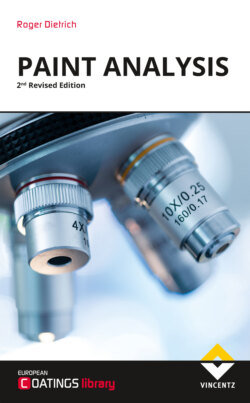Читать книгу Paint Analysis - Roger Dietrich - Страница 13
7Instrumentation
ОглавлениеSome of the analytical techniques described in this book require vacuum conditions (SEM, TOF-SIMS, XPS). Other systems work in ambient air condition (ATR-FT-IR, Raman). Although they differ significantly in detail and in their chemical background, the instrumentation follows a general concept.
The instrumentation setup for the majority of techniques consists of an excitation system (the primary system) that generates photons, electrons or ions. The primary beam is directed by a focusing system onto the sample surface and into the desired area. Some techniques have an additional sputtering system (e.g. an ion gun) that allows for subsequent sputtering of layers and thus for depth profiling. After interaction of the primary beam with the sample (surface), the excited secondary radiation is collected by a ray optics system which directs the secondary beam towards the analyser. The analyser separates the secondary radiation spectroscopically by energy, direction or mass. The detector records the separated or resolved signals and measures their intensity. The signals generated by it are displayed as a spectrum, which is a chart of intensity versus wavelength, mass or energy.
Figure I.12: General instrument setup for surface analysis systems
